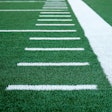Copyright 2017 The E.W. Scripps Company
All Rights Reserved
Abilene Reporter-News (Texas)
Fitness trackers all come with goals that you can strive for on a daily, weekly or even monthly basis.
With first quarter earnings behind us, it comes as no surprise that wearable technology continued to top the charts. It is estimated that 1 in 2 Americans has a fitness tracker now. To make sure you're reaping all the benefits and to ensure your tracker is paying the biggest dividends on your investment (time and energy), follow a few basic principles.
First, understand how your device works. Does your fitness tracker tell the time, test your heart rate and give you activity reminders?
The first thing you need to know is what kind of accountability, or information you can expect from that little band around your wrist. It's certainly no replacement for a personal trainer but think of it as your fitness buddy that motivates you each time you glance at it. My No. 1 tip for users - read the instructions. We all want to jump in and start playing with any new toy, but by reading the manual you won't miss out on any features.
Next, have a working knowledge about heart rates ... or at least your own. If your tracker is really smart, it will calculate your heart rate (HR) for you. If not, you need to know how to calculate it yourself. Start by knowing your Maximum HR.
This is the number you get when subtracting your age from 220. Next, calculate your training zones. For the best general results, you want to be exercising at 70 percent of your Max HR but not more than 90 percent Max HR. For example, a person who is 45 has a max HR of 175 beats per minute (220 - 45 = 175). Their ideal training zone is 123-158 beats per minute or Max HR x 70 percent and 90 percent (175 x 70 percent =123, 175 x 90 percent =158). This means our tracker needs to show 123 or higher to be working at an ideal intensity. If your HR reads lower than 122, it's time to kick things into high gear!
If you want to see change, you need to set goals. There's no doubt that if you set a smart goal you'll achieve the gains you want sooner than if you just wish it to happen. Fitness trackers all come with goals that you can strive for on a daily, weekly or even monthly basis. Try setting your steps to 10,000 a day for good health. This might mean taking the stairs, getting friendly with the water fountain or printer at your work or even saying yes to a lunchtime walk. Most trackers also track your workouts, active minutes of exercise, sleep, nutrition, weight and even water intake.
Finally, set your tracker to send you reminders. This goes back to our first point of knowing how your device works. Consistency is key, so set your tracker up to give you activity reminders to keep you moving throughout the day. All you need to do is choose how many hours of the day you'd like to keep active, and then let your tracker do the rest. By getting regular reminders with motivation and encouragement from your tracker, you'll be surprised how much more conscious and aware you become of hitting your goals!
Angie Ferguson is an exercise physiologist from Fort Myers. She is a USA Triathlon Advanced Level 2 coach, Ironman Certified coach, Slowtwitch Certified coach, USA Cycling coach and has a Specialty in Sports Nutrition certification. For more training tips, read her blog at www.triathlontrainingisfun.com or contact her at www.gearedup.biz.
Fitness trackers all come with goals that you can strive for on a daily, weekly or even monthly basis.
Read More of Today's AB Headlines
Subscribe to Our Daily E-Newsletter
Terms and Conditions Privacy Policy



































